Breadfruit tree
Scientific name: Artocarpus altilis
POWO Status: Tree
IUCN Red List threat level: Not Evaluated
GPS Location: 17° 42′ 56.76″ N, 64° 49′ 43.01″ W
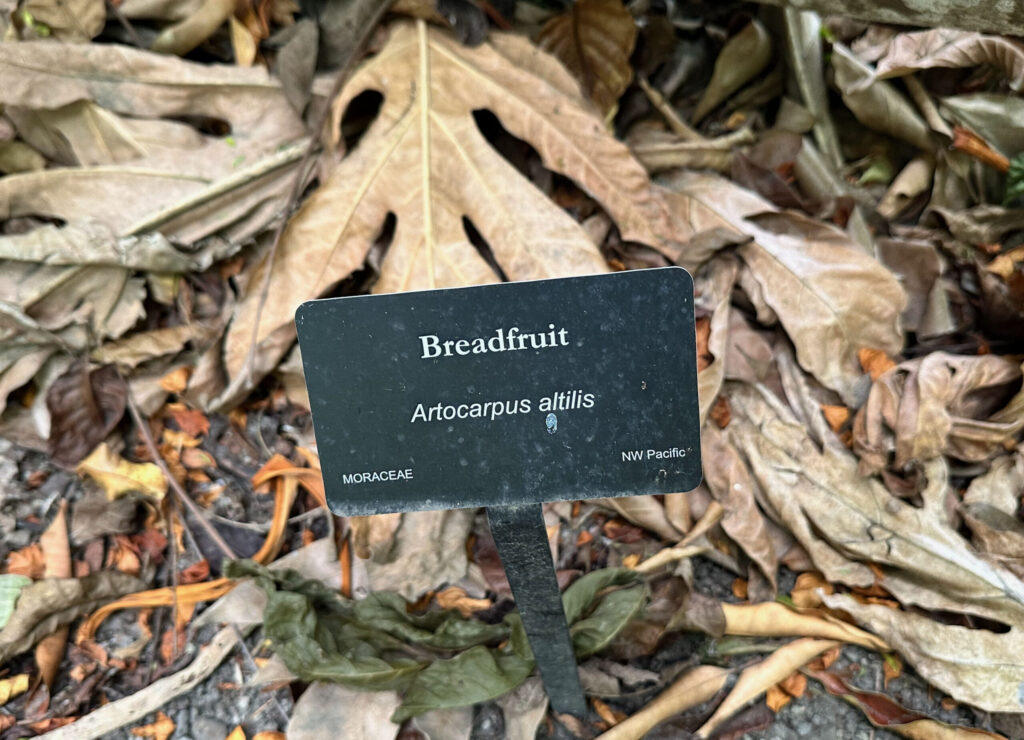
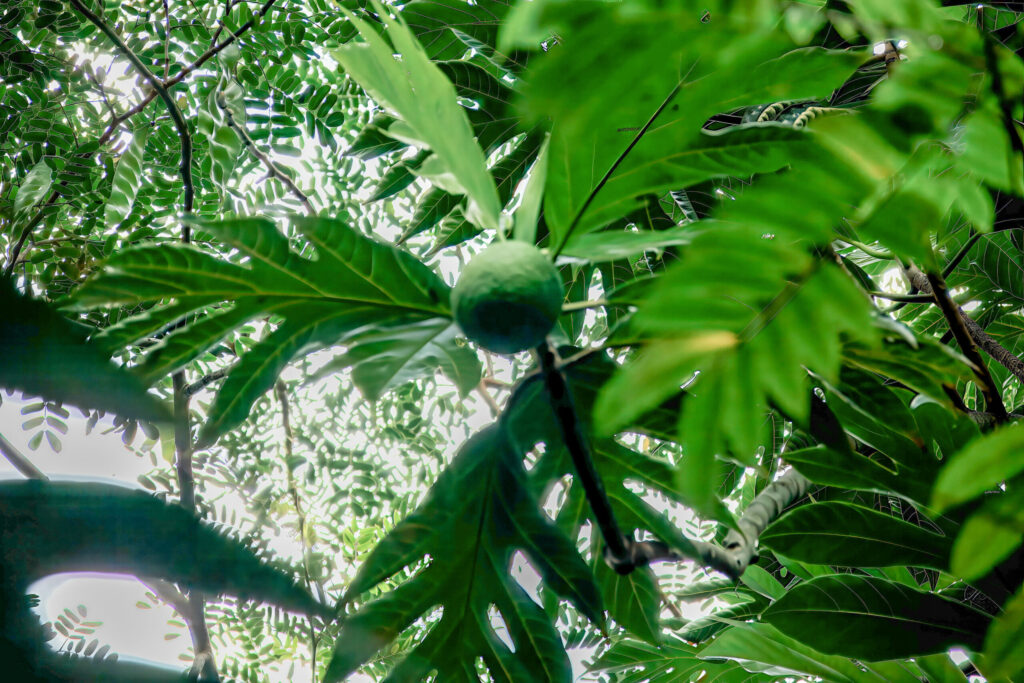
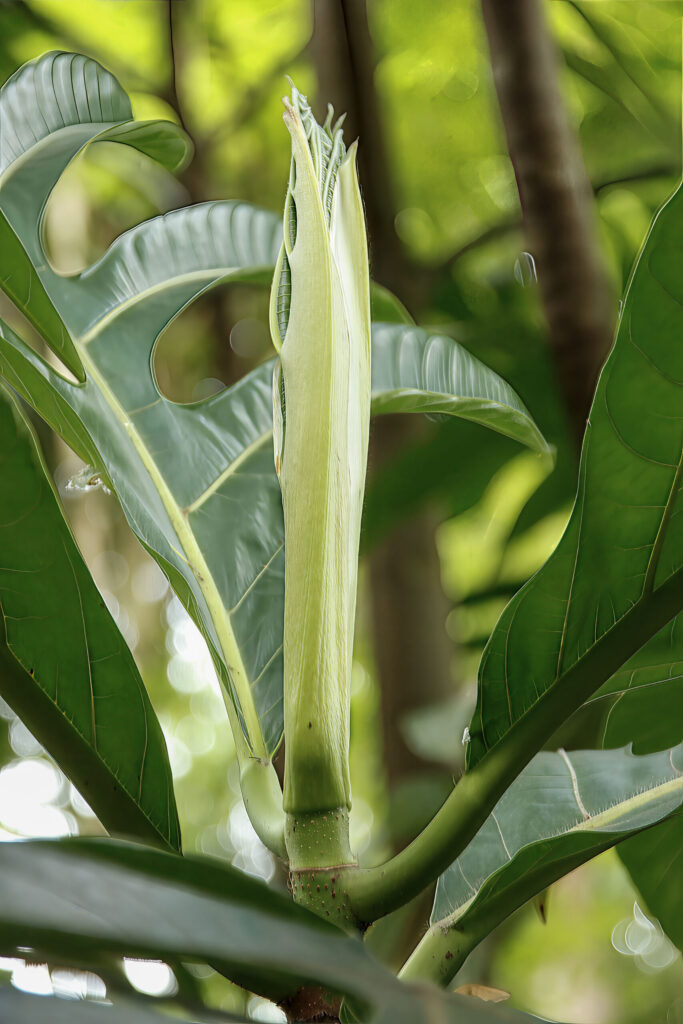
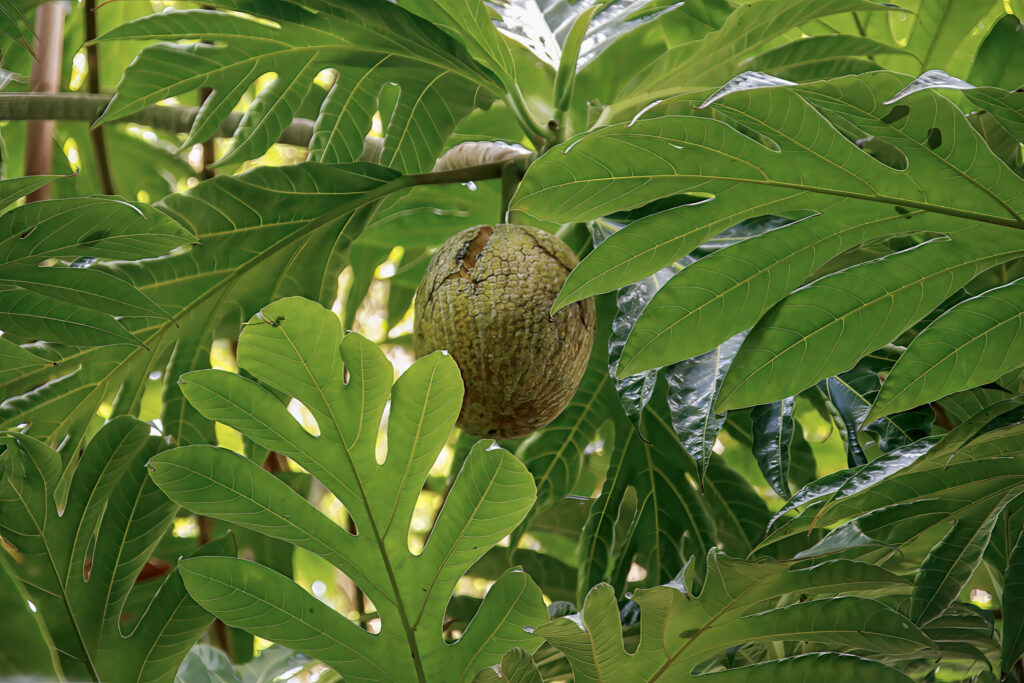
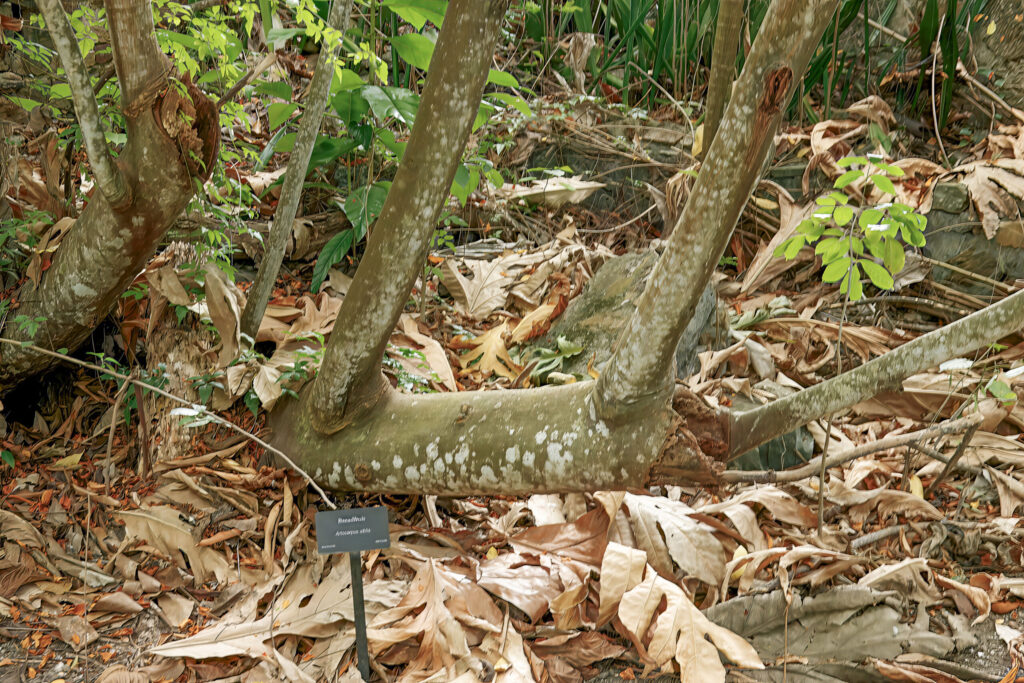
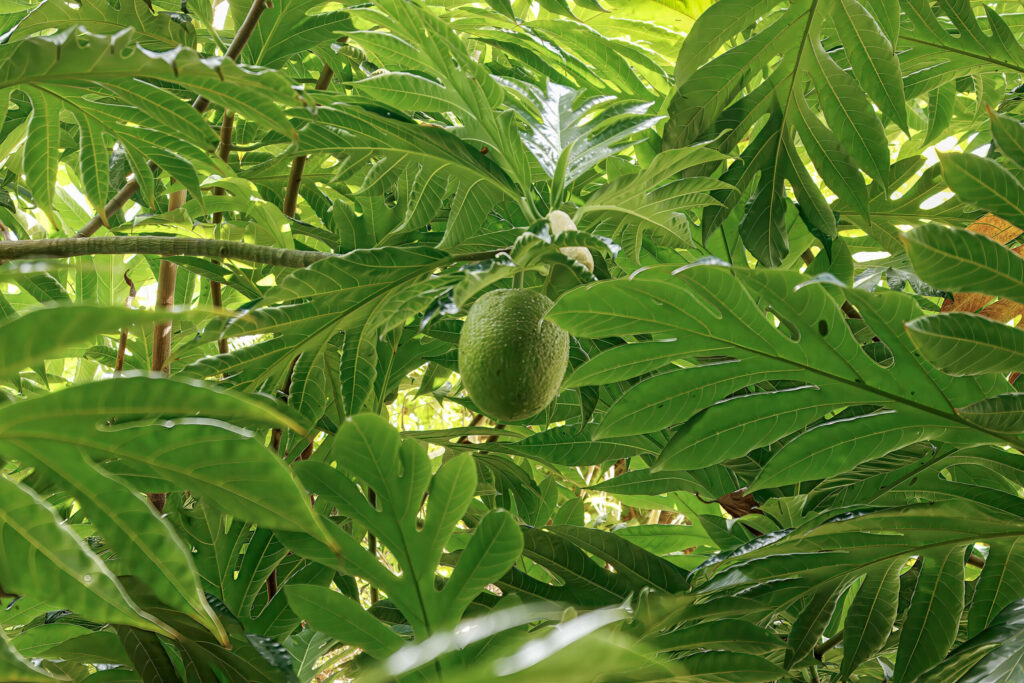
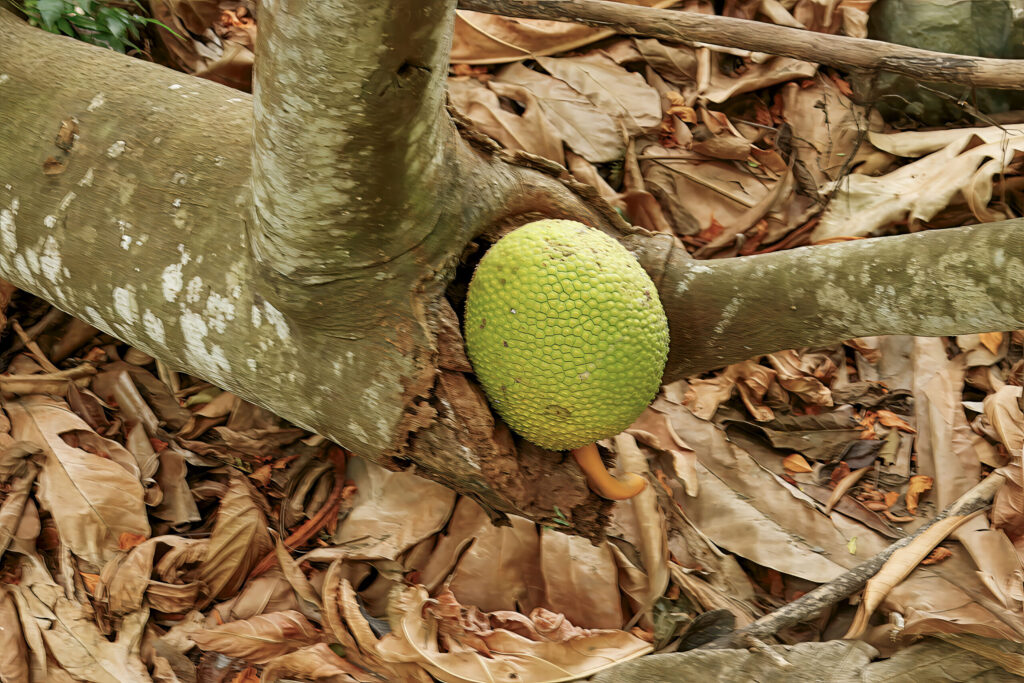
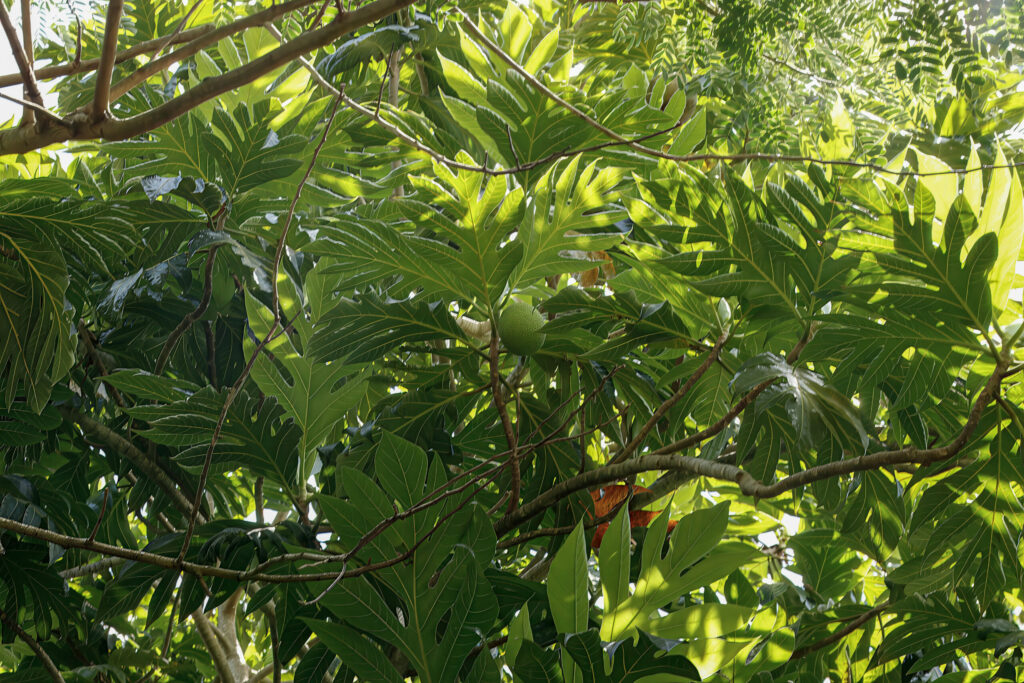
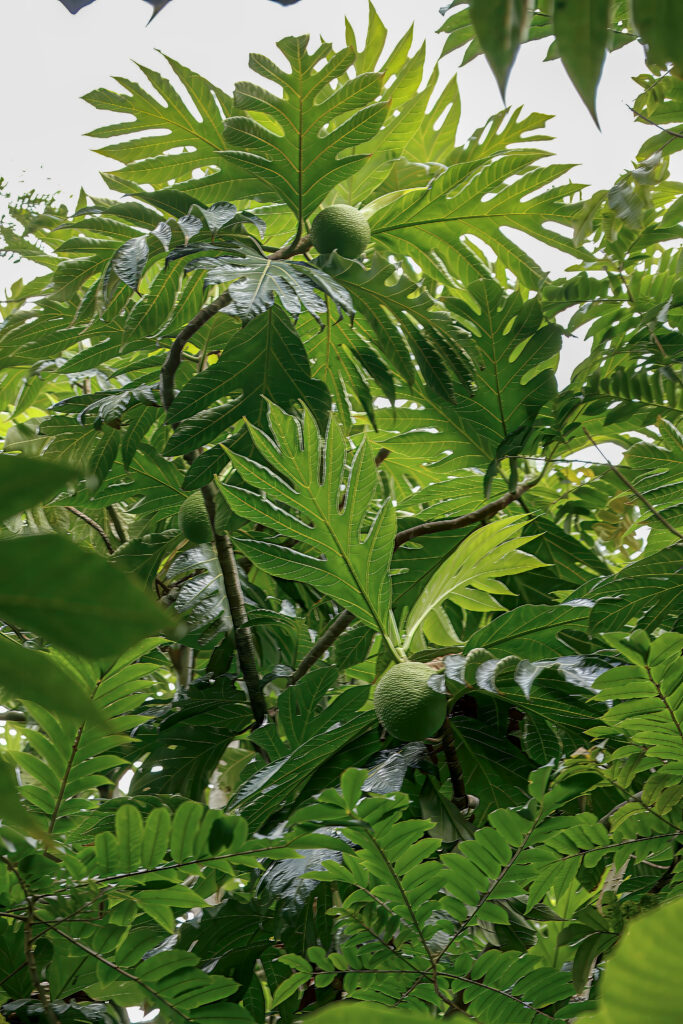
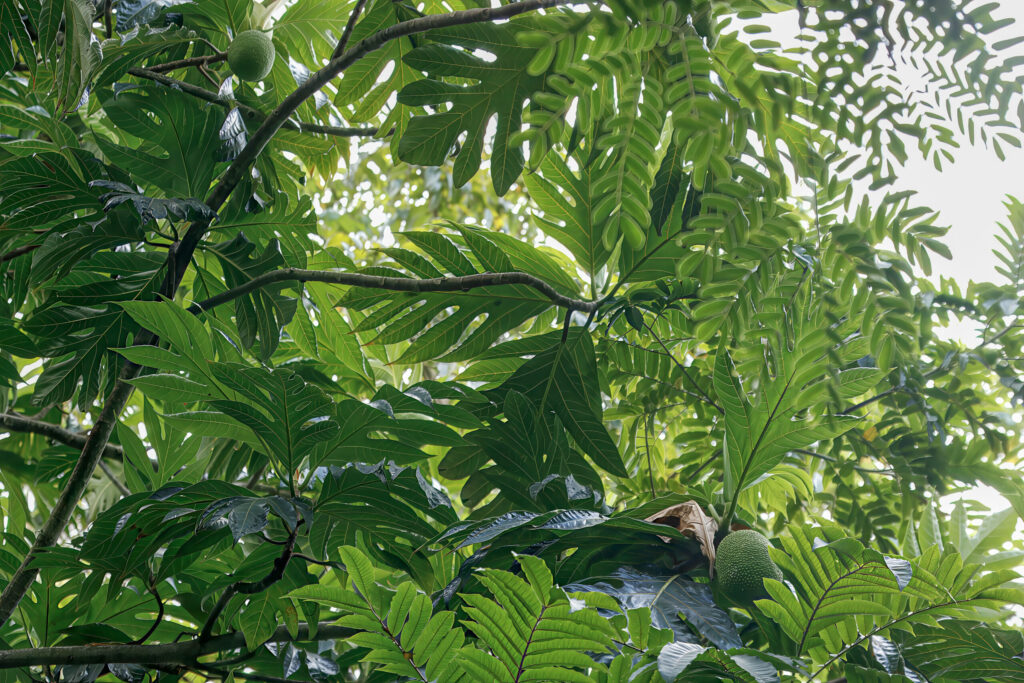
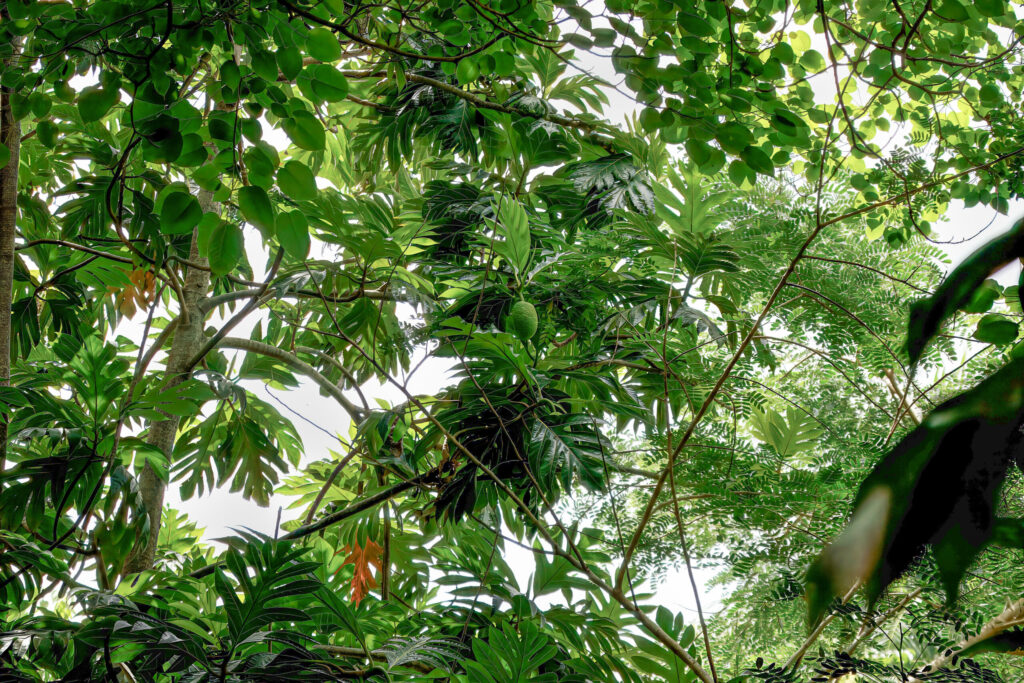
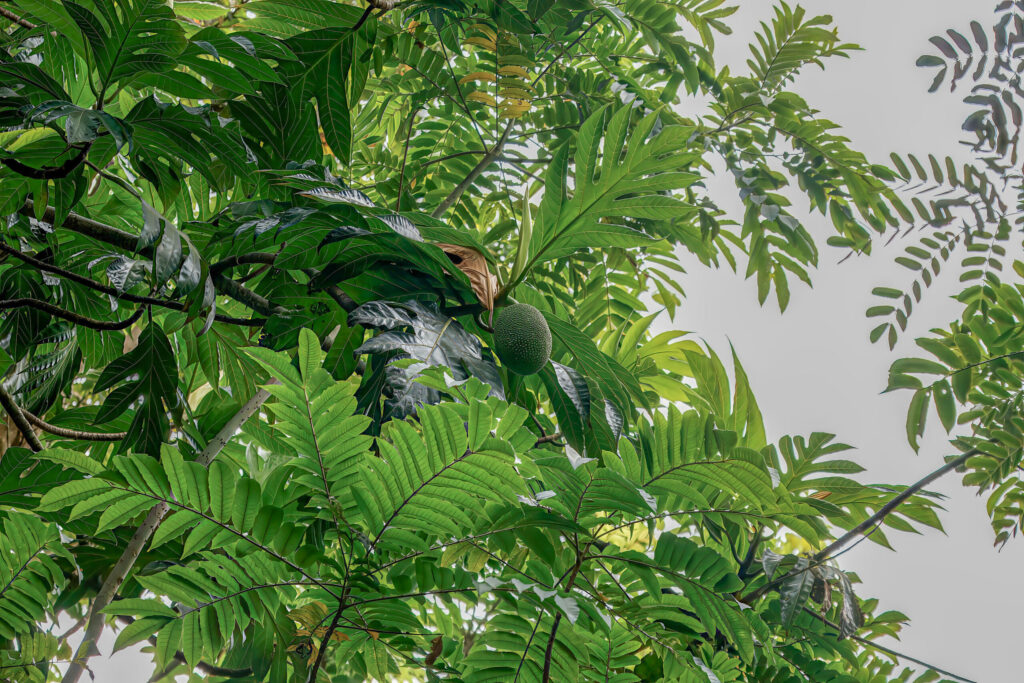
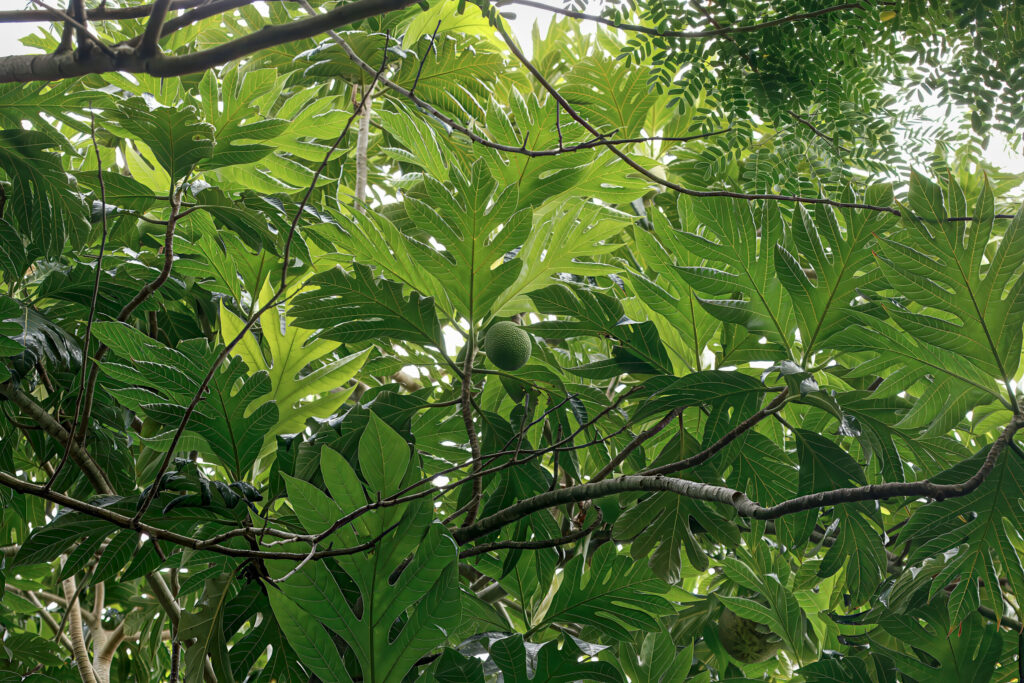
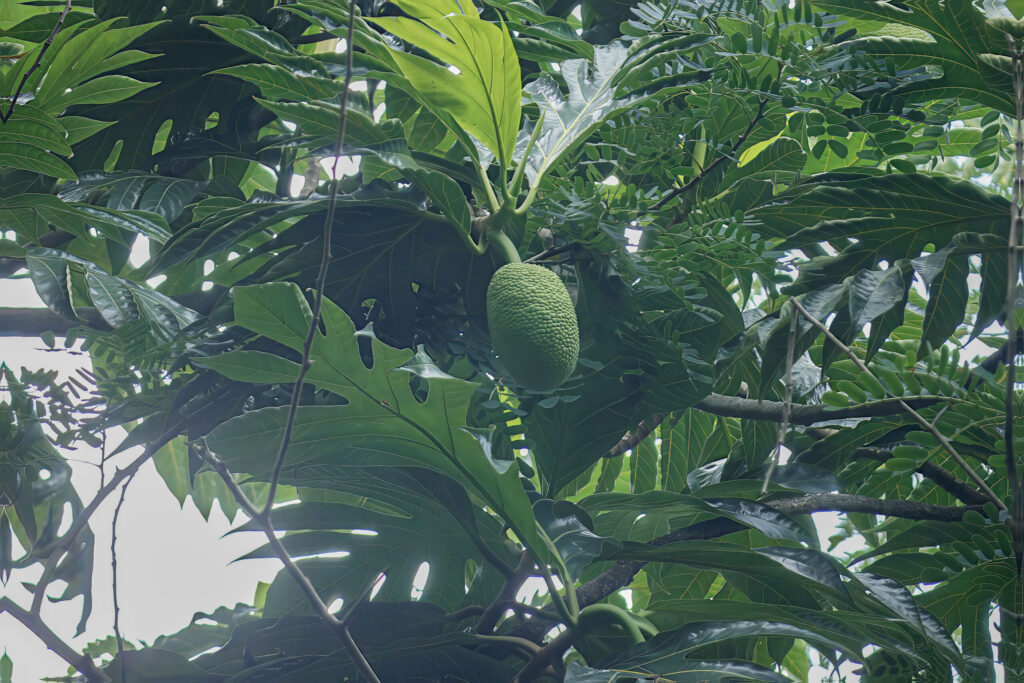
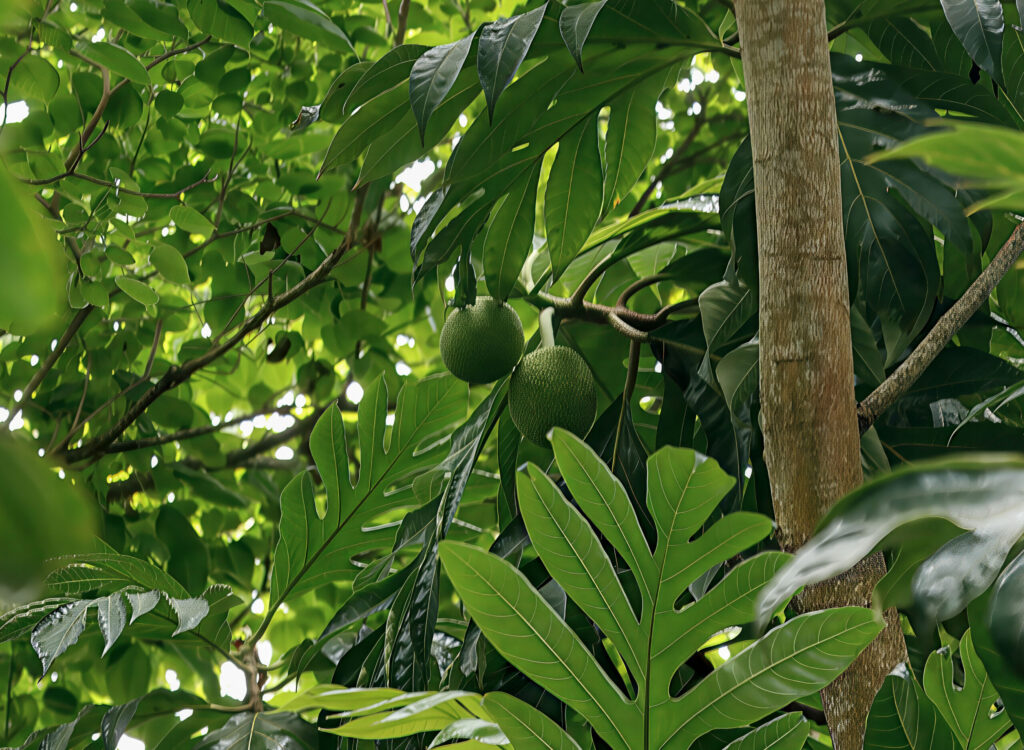
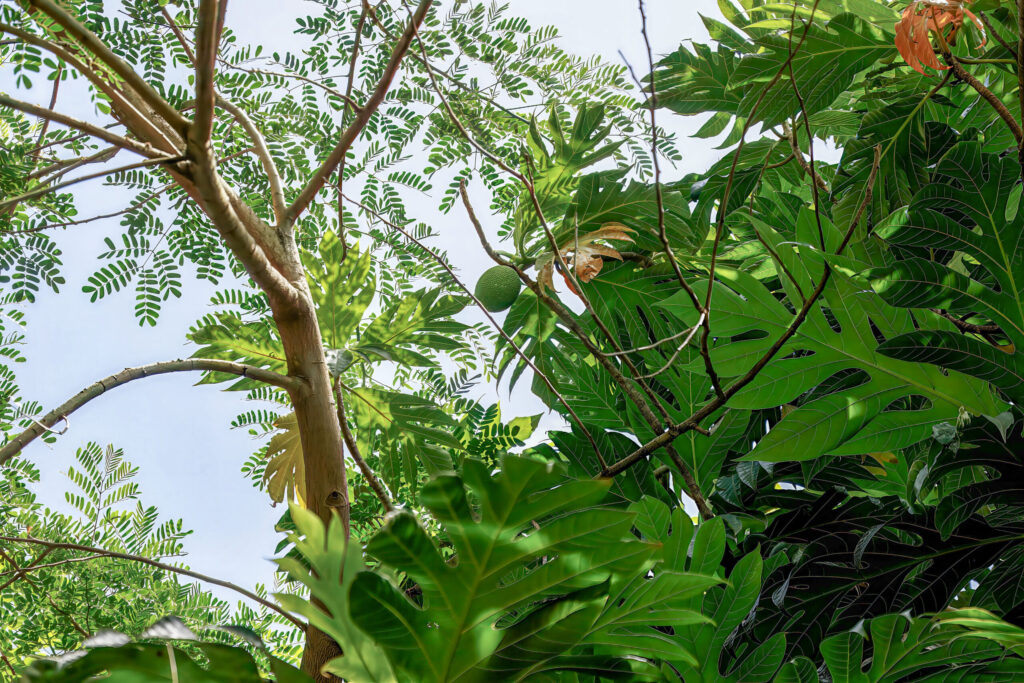
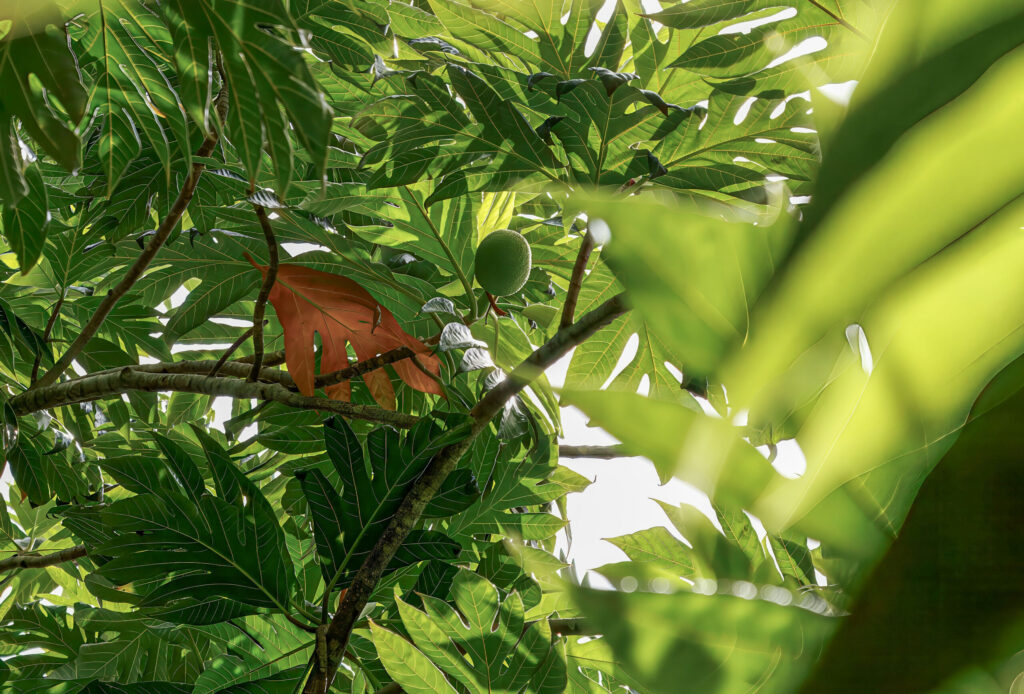
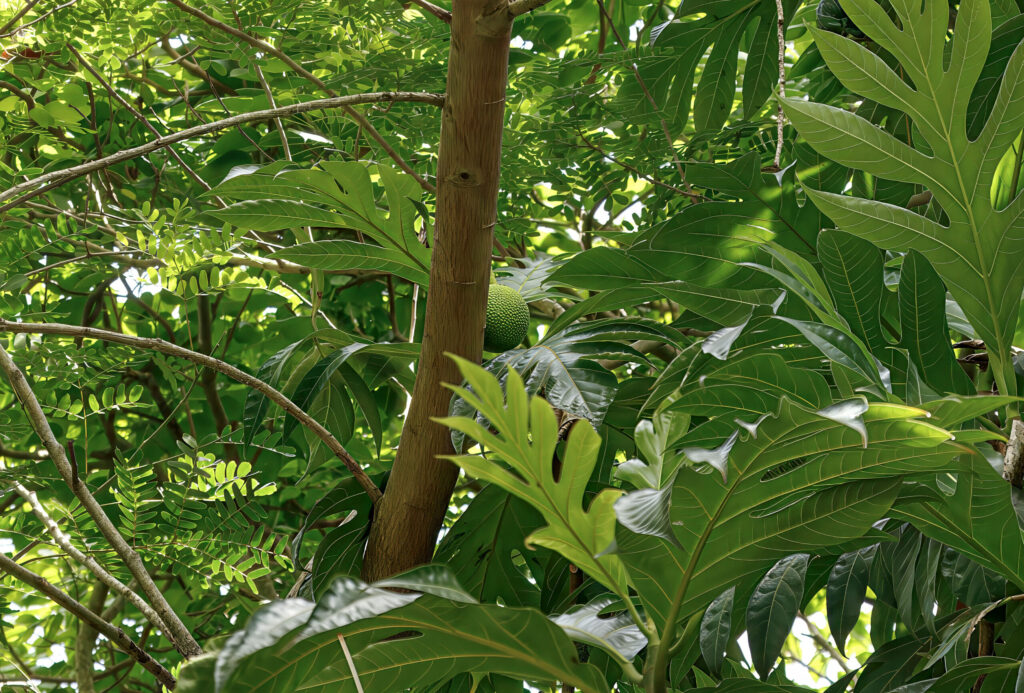
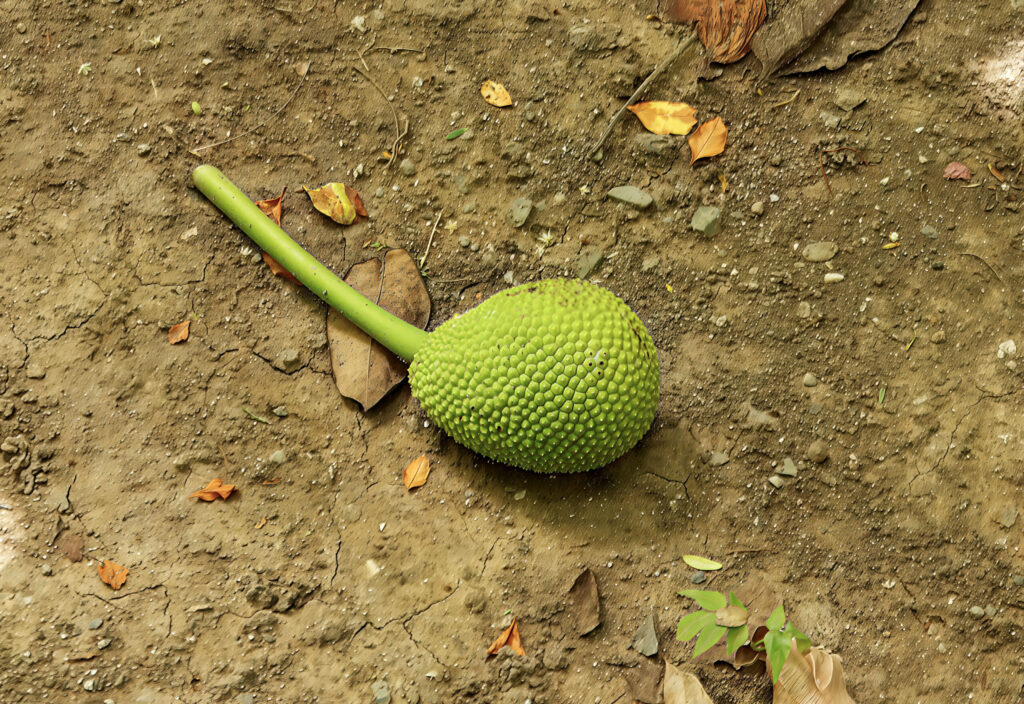

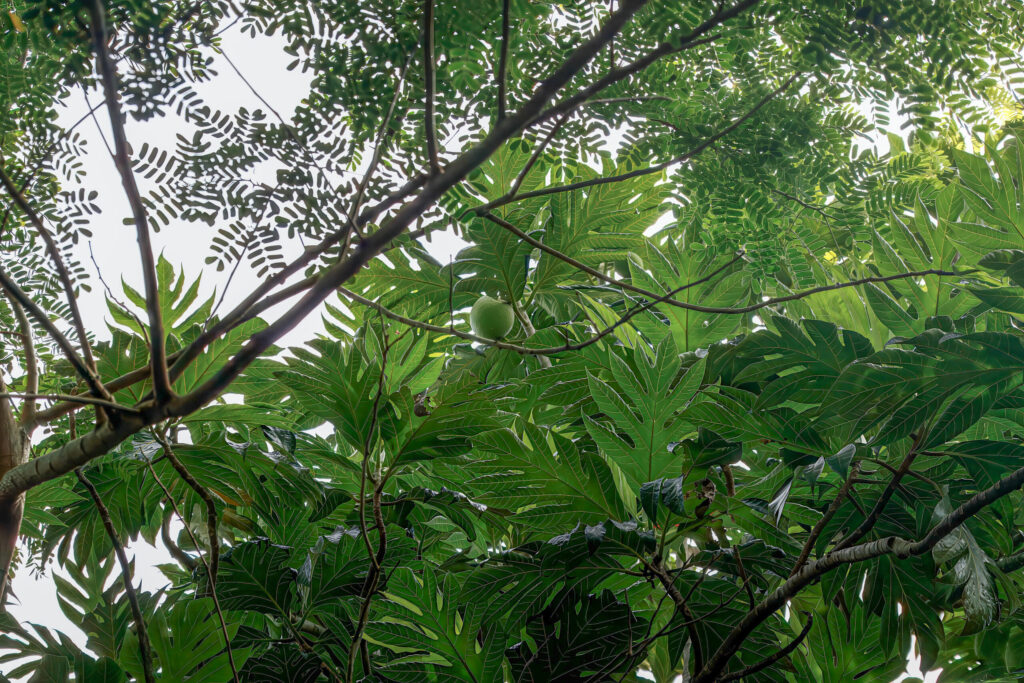
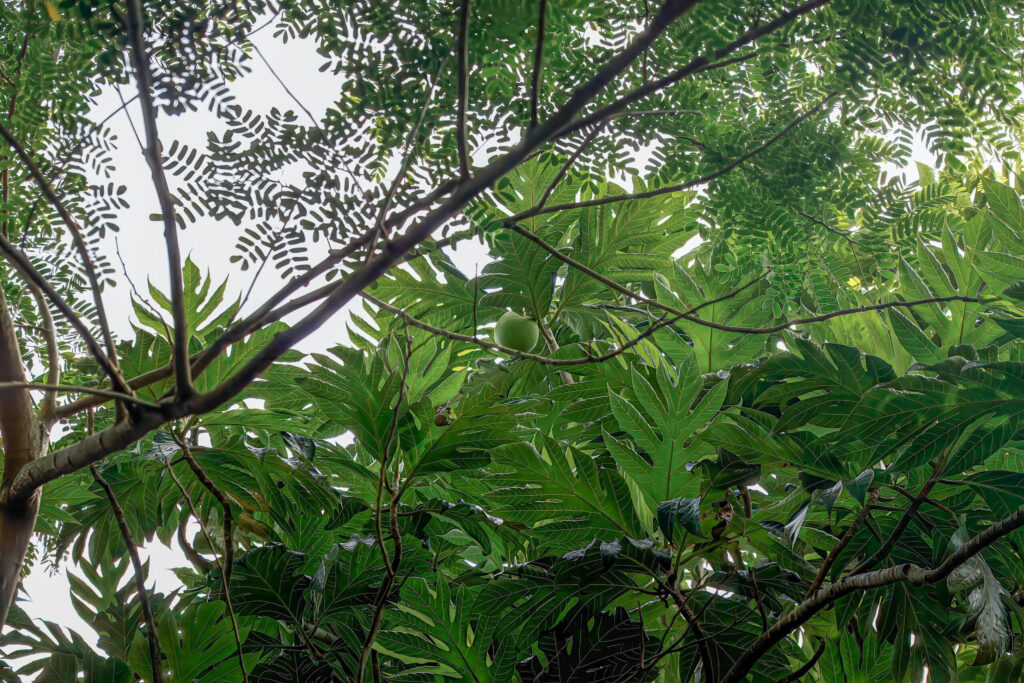
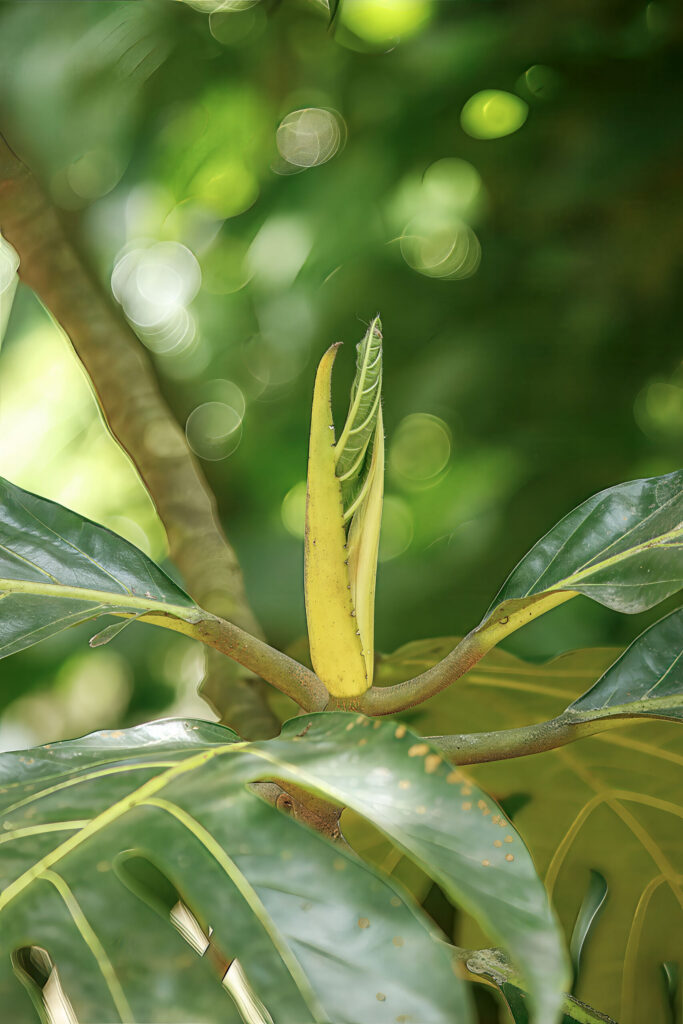
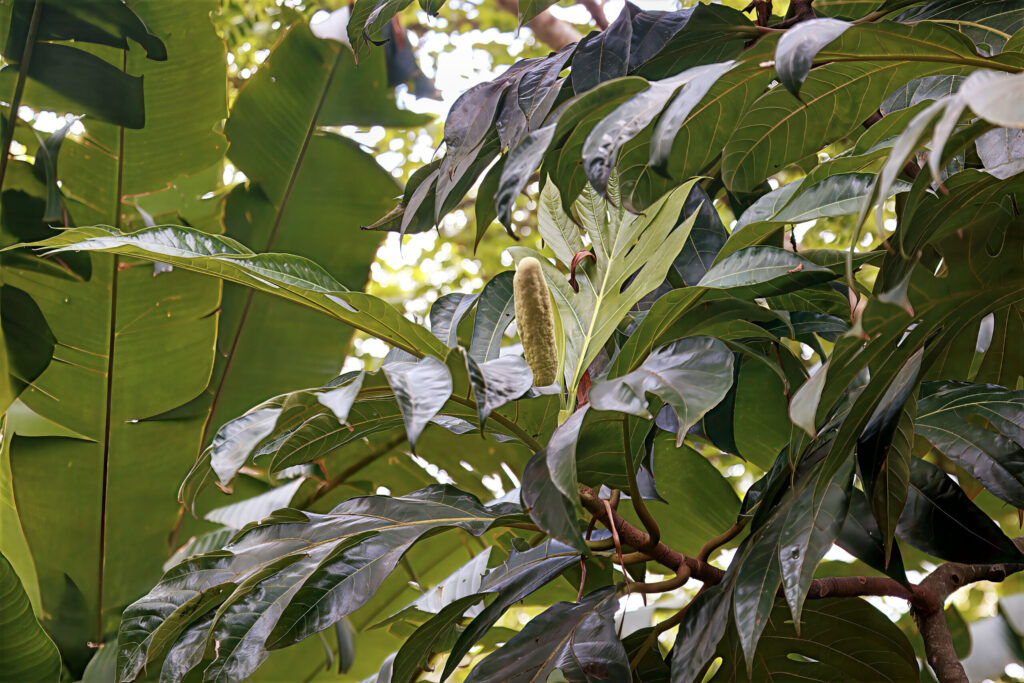
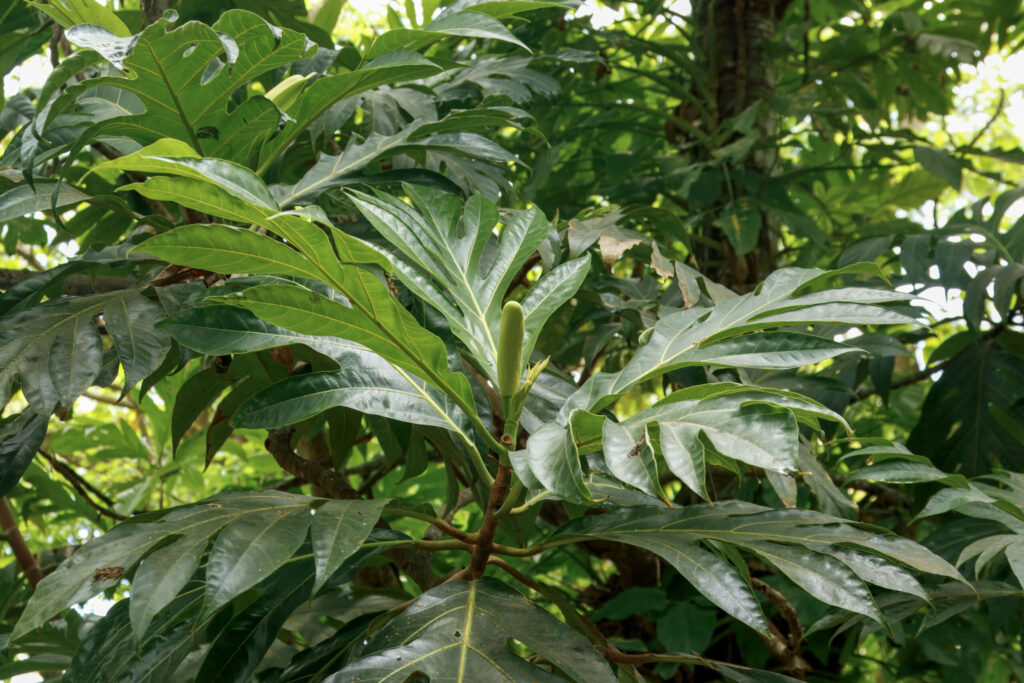
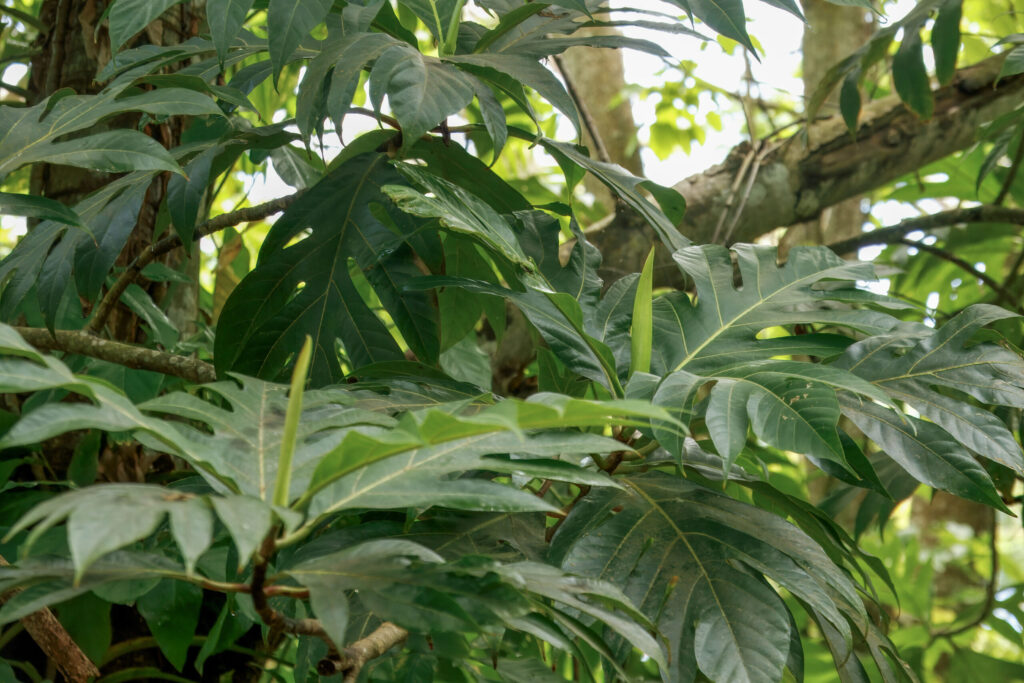

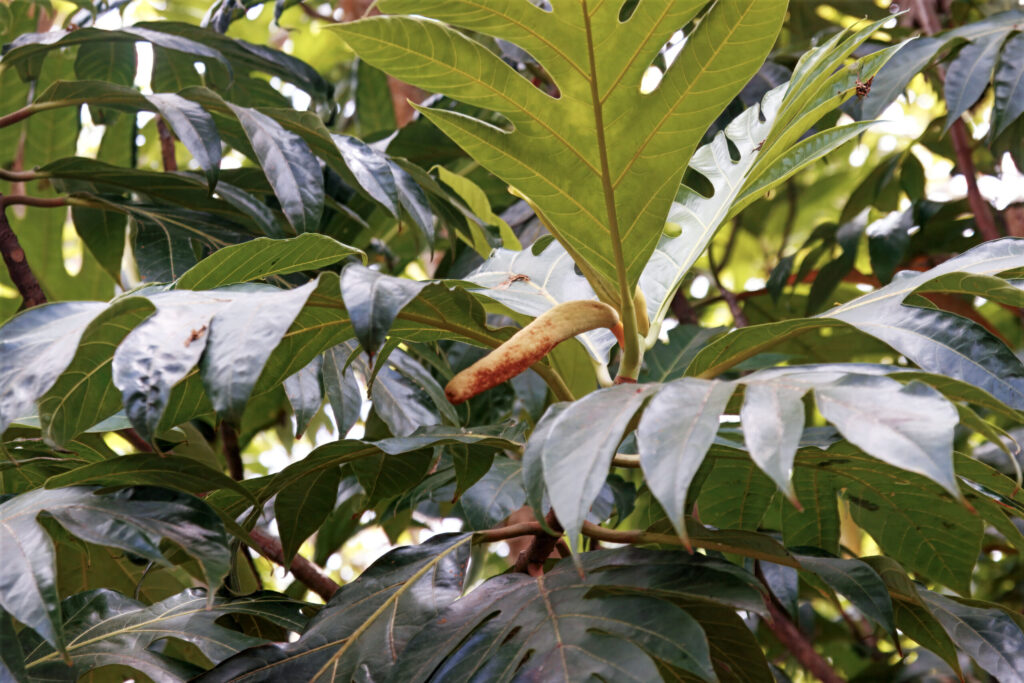

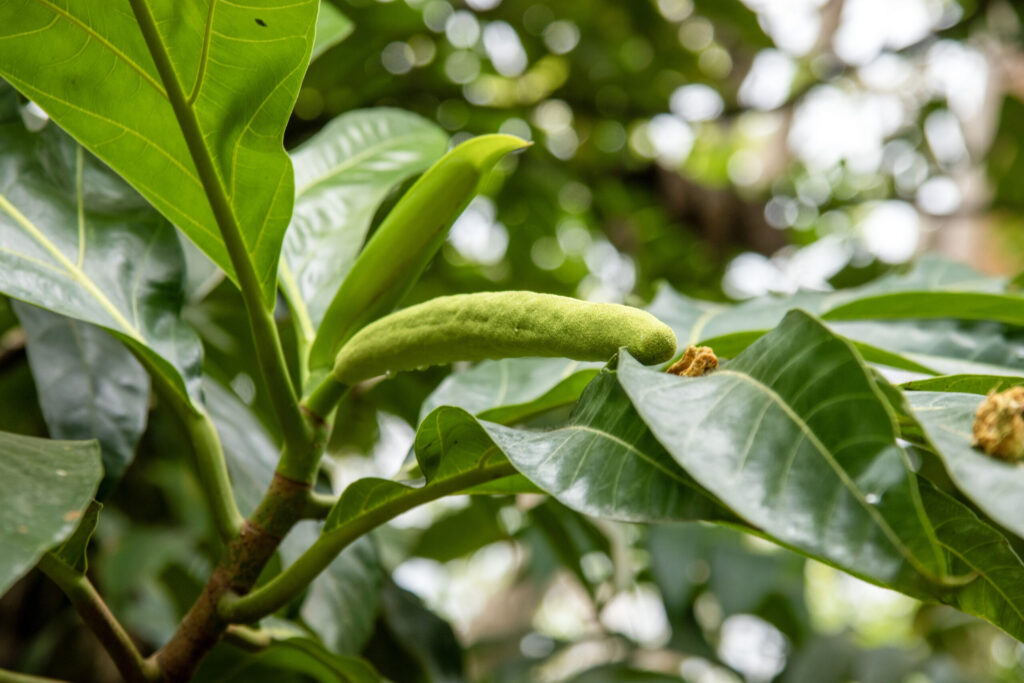
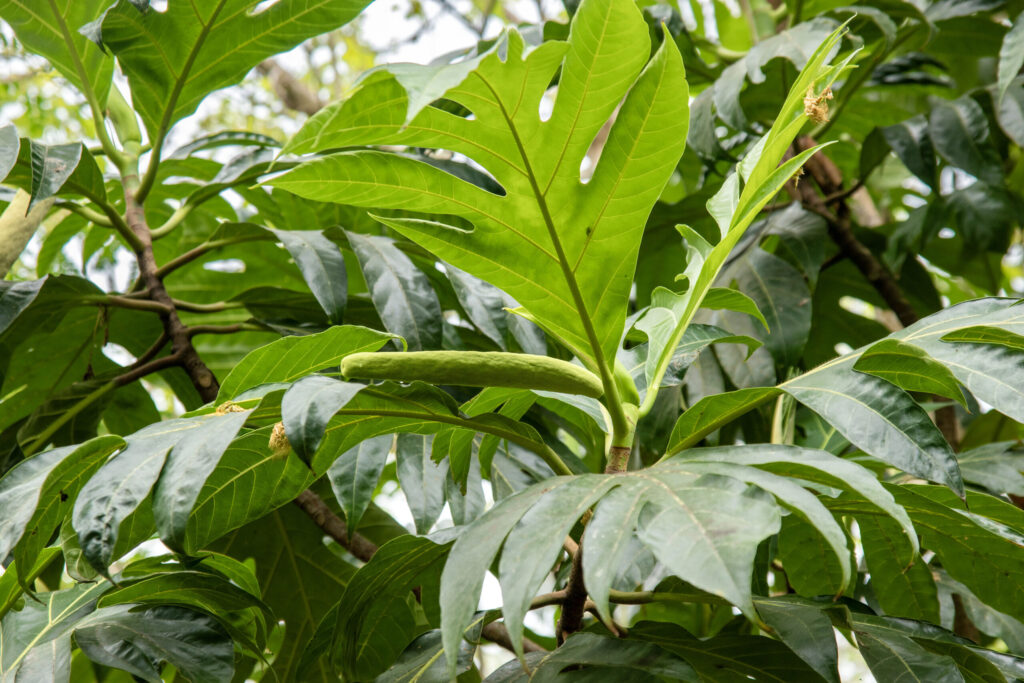
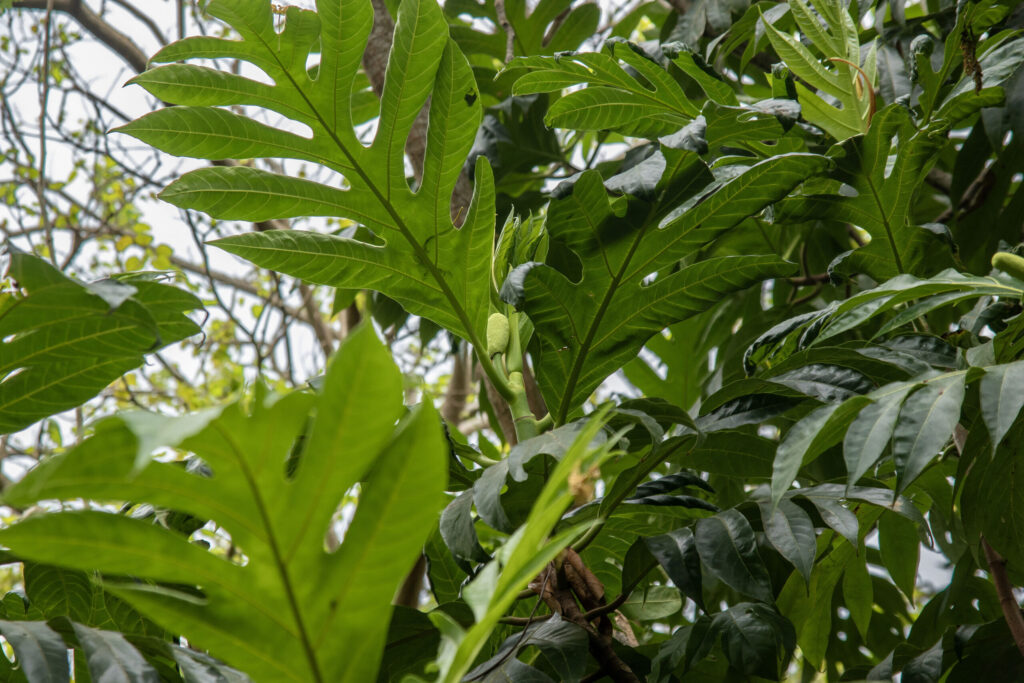
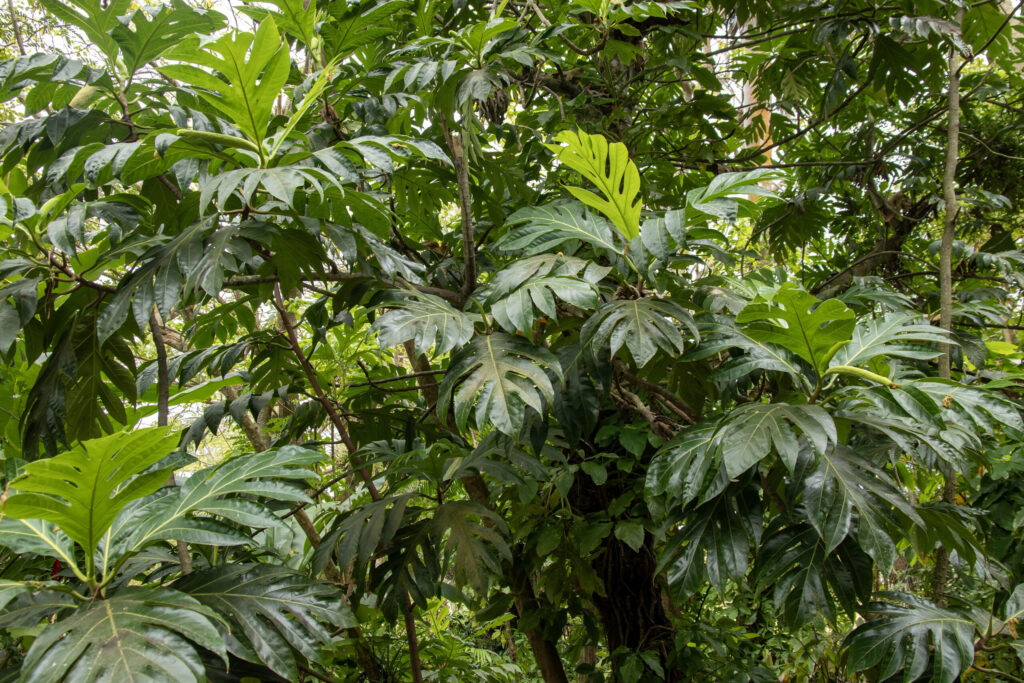
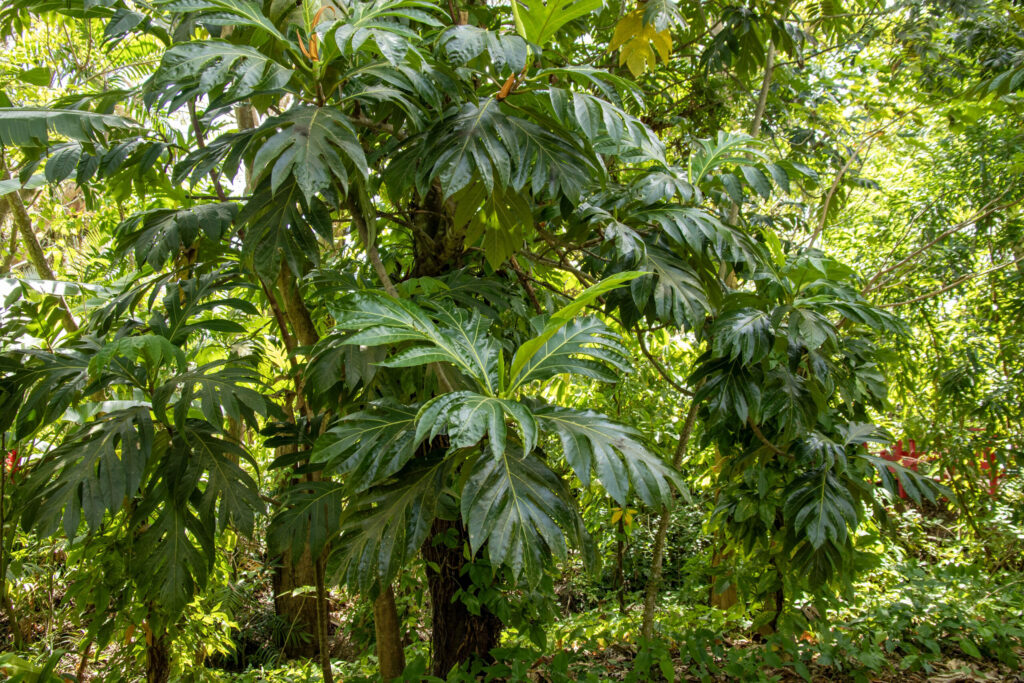
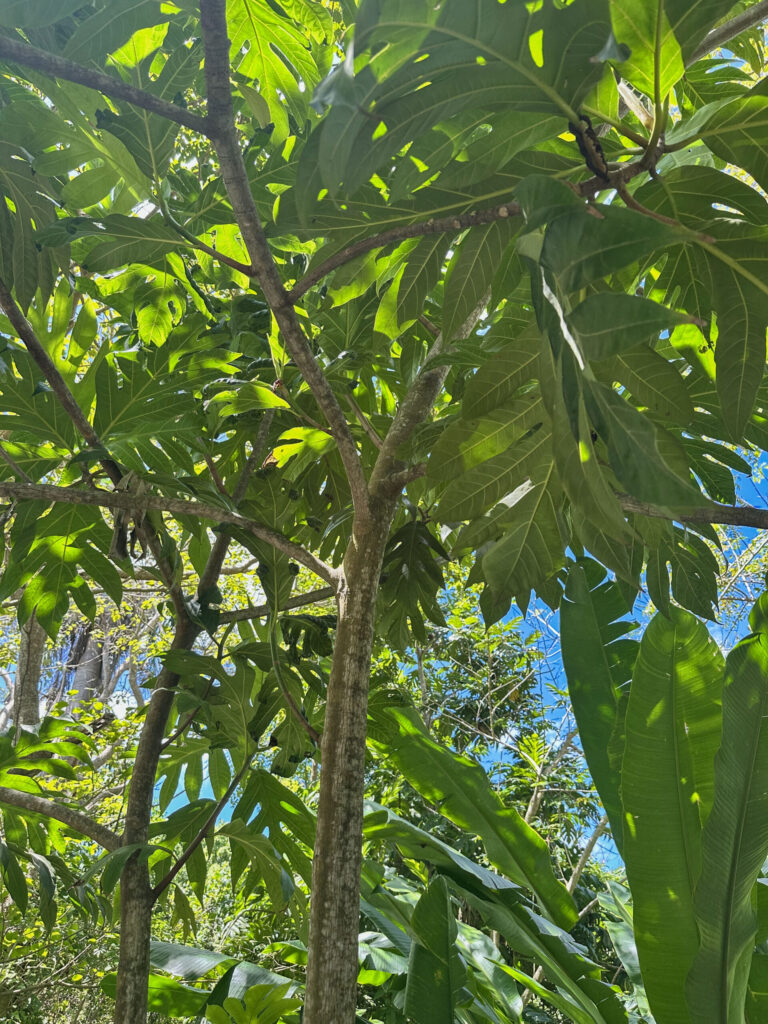
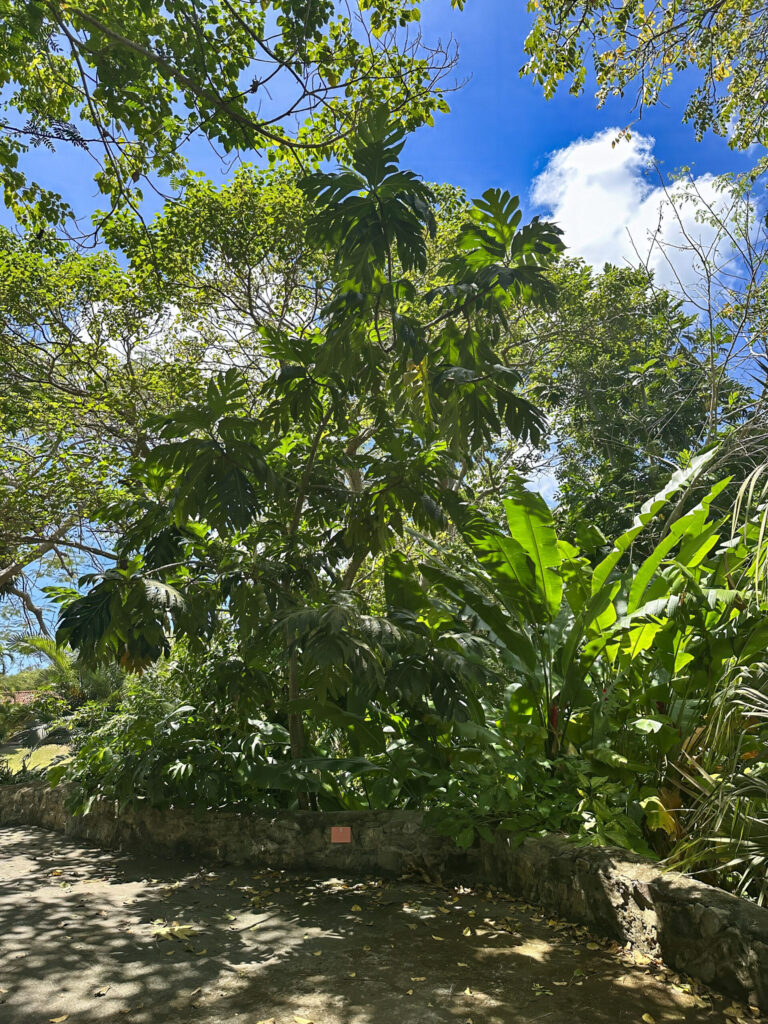

Observations:
Phenological Markers – Breadfruit Tree (Artocarpus altilis)
1. Leaf Behavior
Breadfruit is an evergreen or semi-deciduous tree, depending on rainfall and soil moisture.
- Leaf drop may occur in short bursts, especially during dry periods, but is not usually complete.
- New leaf flushes occur frequently and are characterized by large, deeply lobed leaves that are light green and slightly hairy when young.
Observation Tips:
- Track leaf color, size, and surface texture to distinguish new flushes.
- Observe if partial defoliation precedes flowering in your local microclimate.
2. Flowering
The tree is monoecious, producing male and female inflorescences separately on the same tree.
- Male flowers are slender, club-shaped spikes that emerge first.
- Female flowers are round, green, and appear shortly after the males on the same branches.
- Flowering may occur year-round in St. Croix, but often peaks during the early wet season (May–July).
Observation Tips:
- Document first emergence of male and female flowers.
- Note whether male flowering precedes female and by how many days/weeks.
- Look for insect activity, as bees may visit both flower types.
3. Fruiting
Female flowers mature into large, round or oblong fruit, which can weigh several pounds.
- Fruits take 2–4 months to mature, ripening to a greenish-yellow or light brown surface.
- Fruiting is typically cyclical and may peak once or twice a year, often aligning with rainfall patterns.
- Ripe fruits may drop to the ground if not harvested.
Observation Tips:
- Record fruit set following flowering and track growth stage over weeks.
- Photograph color and texture changes as the fruit ripens.
- Observe signs of fruit drop or animal activity near fallen fruits.
4. Seasonal Rhythms
While capable of year-round fruiting, many breadfruit trees display semi-seasonal peaks in fruit production.
- In St. Croix, this may occur after the first major rains and again toward the end of the wet season, depending on tree maturity and health.
